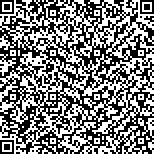|
Copyright © Editorial Office for Marine Sciences Copyright©2008 All Rights Reserved
Supervised by: Chinese Academy of Sciences (CAS) Sponsored by: Institute of Oceanology, CAS
Address: 7 Nanhai Road, Qingdao, China. Postcode: 266071 Tel: 0532-82898755 E-mail: bjb@qdio.ac.cn
Technical support: Beijing E-Tiller Co.,Ltd.
Supervised by: Chinese Academy of Sciences (CAS) Sponsored by: Institute of Oceanology, CAS
Address: 7 Nanhai Road, Qingdao, China. Postcode: 266071 Tel: 0532-82898755 E-mail: bjb@qdio.ac.cn
Technical support: Beijing E-Tiller Co.,Ltd.
